Presidio La Bahia, the world’s finest example of a Spanish frontier fort, is located outside the town of Goliad. The original fort was built in 1721 on the banks of Garcitas Creek near present day Port Lavaca. When this location proved unsuitable, the fort was moved inland in 1726 to a location near present day Victoria. In 1749, the fort was again relocated to its present location near the banks of the San Antonio River.
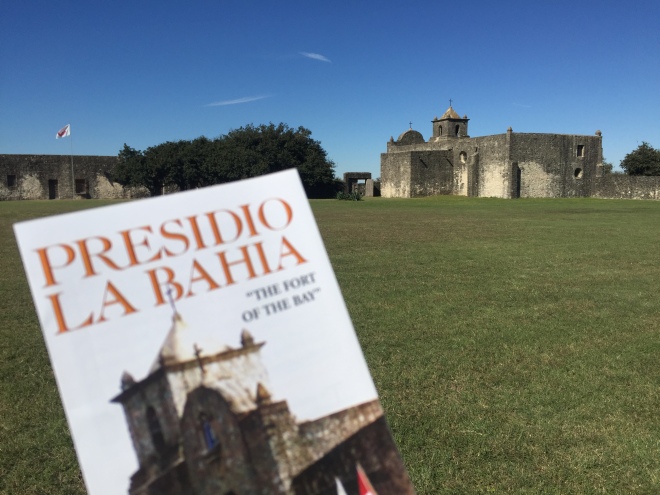 Presidio La Bahia was responsible for the defense of the coastal area and eastern province of Texas. Within time, a settlement called La Bahia (The Bay) grew up around the fort. The name of La Bahia was changed to Goliad in 1829 in honor of Father Miguel Hidalgo, the patriot priest of the Mexican Revolution. Goliad is an anagram formed from the letters of the name Hidalgo (minus the silent letter H).
Presidio La Bahia was responsible for the defense of the coastal area and eastern province of Texas. Within time, a settlement called La Bahia (The Bay) grew up around the fort. The name of La Bahia was changed to Goliad in 1829 in honor of Father Miguel Hidalgo, the patriot priest of the Mexican Revolution. Goliad is an anagram formed from the letters of the name Hidalgo (minus the silent letter H).
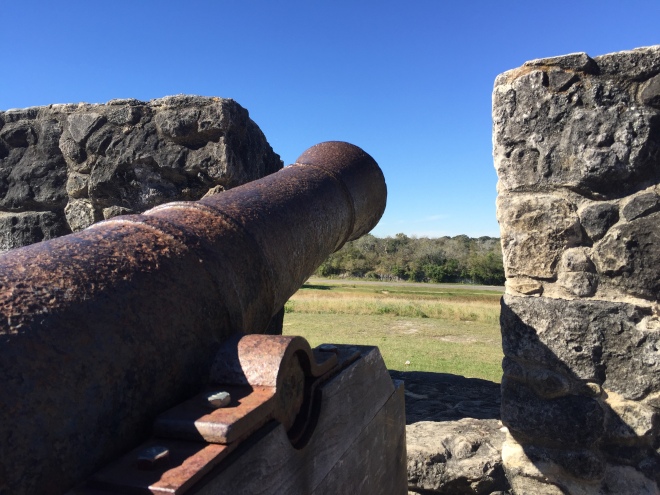 On October 9, 1835, Captain George Collinsworth and his band of Texas fighters attacked and defeated the Mexican garrison stationed at the Presidio. On December 20 of that year, the first Declaration of Texas Independence was formally declared at the fort. This Declaration was signed by 92 Texas citizens inside the chapel of Our Lady of Loreto, the oldest building in the compound.
On October 9, 1835, Captain George Collinsworth and his band of Texas fighters attacked and defeated the Mexican garrison stationed at the Presidio. On December 20 of that year, the first Declaration of Texas Independence was formally declared at the fort. This Declaration was signed by 92 Texas citizens inside the chapel of Our Lady of Loreto, the oldest building in the compound.
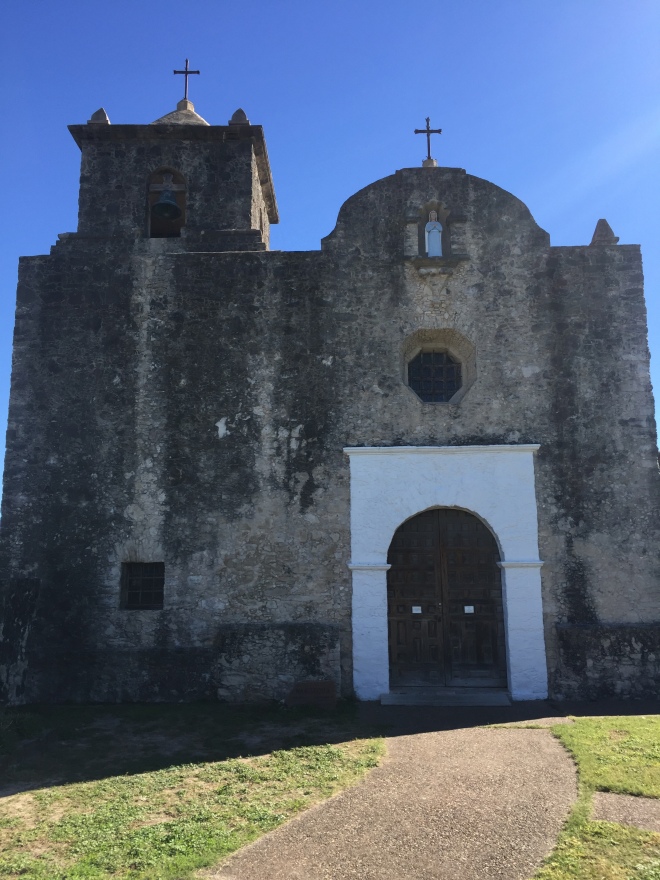 The darkest day in Texas history, the Goliad Massacre, took place at Presidio La Bahia on March 27, 1836 — Palm Sunday. Colonel James Walker Fannin and 341 men under his command had surrendered to General José de Urrea of the Mexican army on March 20 at the Battle of Coleto Creek. The Mexican army held Fannin and his men as prisoners at the Presidio and at the chapel of Our Lady of Loreto.
The darkest day in Texas history, the Goliad Massacre, took place at Presidio La Bahia on March 27, 1836 — Palm Sunday. Colonel James Walker Fannin and 341 men under his command had surrendered to General José de Urrea of the Mexican army on March 20 at the Battle of Coleto Creek. The Mexican army held Fannin and his men as prisoners at the Presidio and at the chapel of Our Lady of Loreto.
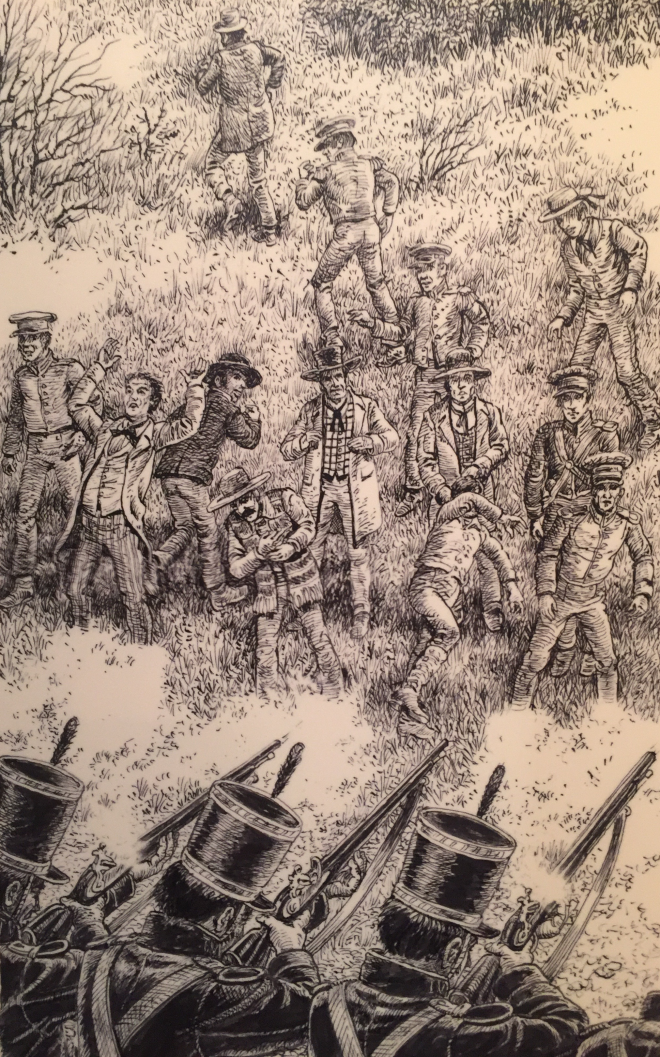 Fannin and his men had drafted terms of surrender and expected to be treated with a measure of dignity as prisoners of war. General Urrea, however, told Fannin that he could not ratify his terms. He was bound by Santa Anna’s orders and a congressional decree to accept no terms other than unconditional surrender. And, although General Urrea recommended clemency for Fannin and his men, he later received orders from Santa Anna to execute all of the prisoners. He was left with no choice but to carry out the orders.
Fannin and his men had drafted terms of surrender and expected to be treated with a measure of dignity as prisoners of war. General Urrea, however, told Fannin that he could not ratify his terms. He was bound by Santa Anna’s orders and a congressional decree to accept no terms other than unconditional surrender. And, although General Urrea recommended clemency for Fannin and his men, he later received orders from Santa Anna to execute all of the prisoners. He was left with no choice but to carry out the orders.
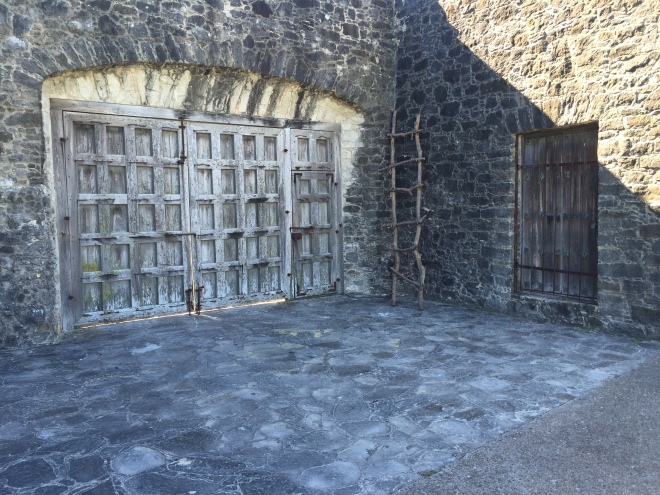 Some of the men were killed on the grounds of the Presidio and others were killed outside the fort. A few managed to escape. Twice as many men died at the Goliad Massacre than died at the Alamo. As news of the Goliad Massacre spread, streams of volunteers came to Texas to take up arms against the brutal dictator Santa Anna. “Remember the Alamo!” and “Remember Goliad!” became the most potent battle cries of the Texas Revolution.
Some of the men were killed on the grounds of the Presidio and others were killed outside the fort. A few managed to escape. Twice as many men died at the Goliad Massacre than died at the Alamo. As news of the Goliad Massacre spread, streams of volunteers came to Texas to take up arms against the brutal dictator Santa Anna. “Remember the Alamo!” and “Remember Goliad!” became the most potent battle cries of the Texas Revolution.
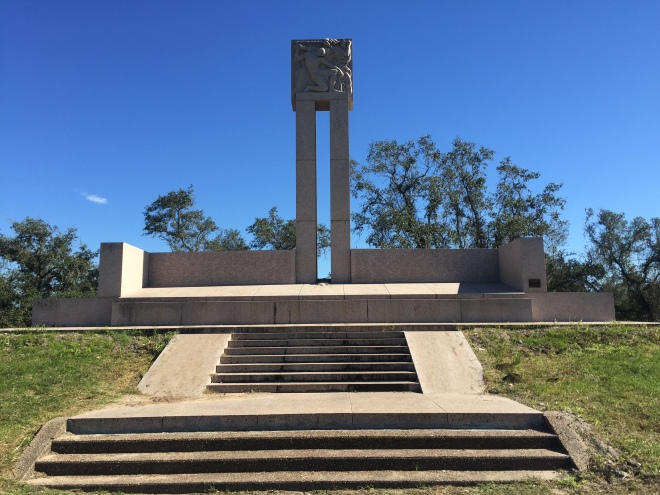 Fannin and his men are buried in a mass grave outside of the walls of the Presidio. Their names are etched on the pink granite walls of the Fannin Memorial Monument, erected over the burial site in 1938 by the State of Texas. This site is located next to La Bahia Cemetery where you can find grave markers that date back to the mid-nineteenth century.
Fannin and his men are buried in a mass grave outside of the walls of the Presidio. Their names are etched on the pink granite walls of the Fannin Memorial Monument, erected over the burial site in 1938 by the State of Texas. This site is located next to La Bahia Cemetery where you can find grave markers that date back to the mid-nineteenth century.
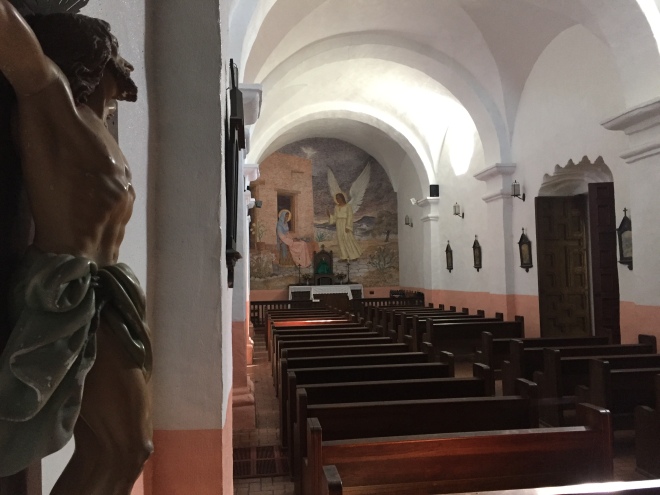 Our Lady of Loreto Chapel, where Fannin and his men spent their final days, is one of the oldest churches in the United States and is still in use today. In 1946, Antonio Garcia of Corpus Christi, known as the “Michelangelo of South Texas,” painted a beautiful fresco behind the altar. Lincoln Borglum, son of Gutzon Borglum of Mount Rushmore fame, sculpted the statue of Our Lady of Loreto that sits in the outside niche above the doors to the chapel.
Our Lady of Loreto Chapel, where Fannin and his men spent their final days, is one of the oldest churches in the United States and is still in use today. In 1946, Antonio Garcia of Corpus Christi, known as the “Michelangelo of South Texas,” painted a beautiful fresco behind the altar. Lincoln Borglum, son of Gutzon Borglum of Mount Rushmore fame, sculpted the statue of Our Lady of Loreto that sits in the outside niche above the doors to the chapel.
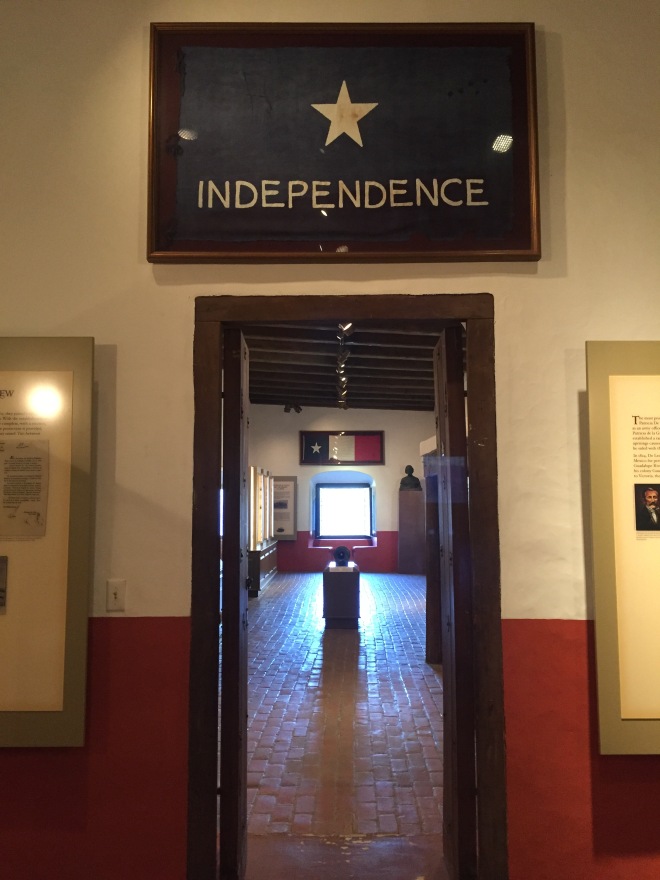 You can learn much more about the history of Presidio La Bahia by visiting this National Historic Landmark. Visitors should watch the brief video that gives a broad overview of the history of the fort before walking through the museum filled with artifacts found on site. The grounds and out buildings are well-maintained and give visitors a sense of what life was like at the Presidio.
You can learn much more about the history of Presidio La Bahia by visiting this National Historic Landmark. Visitors should watch the brief video that gives a broad overview of the history of the fort before walking through the museum filled with artifacts found on site. The grounds and out buildings are well-maintained and give visitors a sense of what life was like at the Presidio.
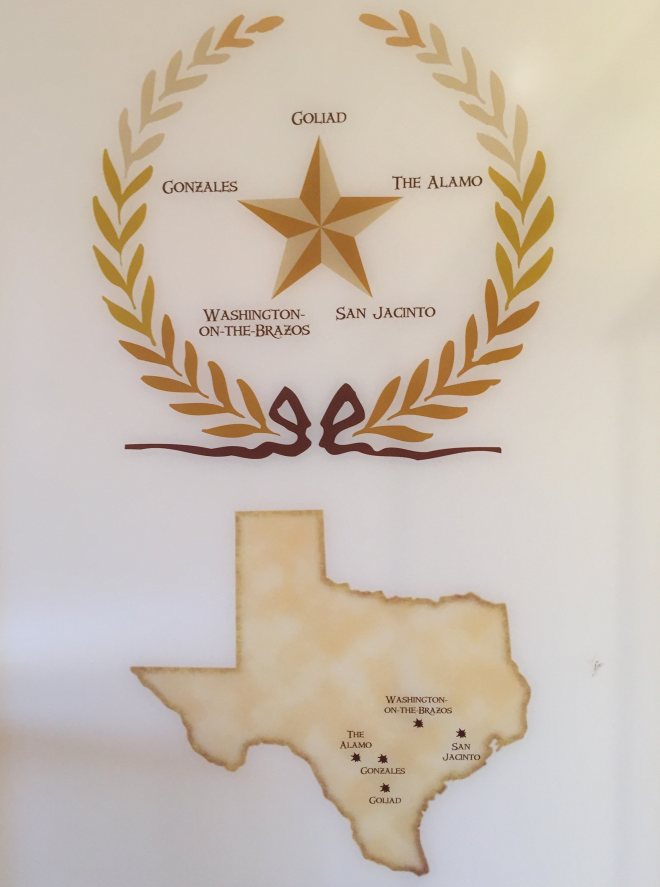 As you travel the Lone Star State, be sure to visit the sites that preserve the history of the Texas Revolution. Visiting Presidio La Bahia and the Fannin Memorial Monument in Goliad is a great way to remember and honor those who gave their lives for the great state of Texas. Their sacrifice should not be forgotten.
As you travel the Lone Star State, be sure to visit the sites that preserve the history of the Texas Revolution. Visiting Presidio La Bahia and the Fannin Memorial Monument in Goliad is a great way to remember and honor those who gave their lives for the great state of Texas. Their sacrifice should not be forgotten.
- Comment
- Reblog
-
Subscribe
Subscribed
Already have a WordPress.com account? Log in now.

Elayne and I, along with another couple, spent a night in the two-bedroom former officers’ quarters within Presidio la Bahia some years ago. I remember how eerie it felt at night on the grounds – no lights, no sounds save for the winds. I also remember we had been primed with ghost stories, and when we checked out the next morning, after I offered my commentary of , “Well, we didn’t see any ghosts last night.” The guy at the check-out desk gave me a quizzical look with an arched eyebrow, and said, “Oh?” I thought it was Tony Perkins and we were at the Bates Motel.
LikeLike
Thanks for sharing, Nolan. I wondered about what it might be like to spend the night at a place saturated with so much history — and so much death. Fascinating place, indeed.
LikeLike